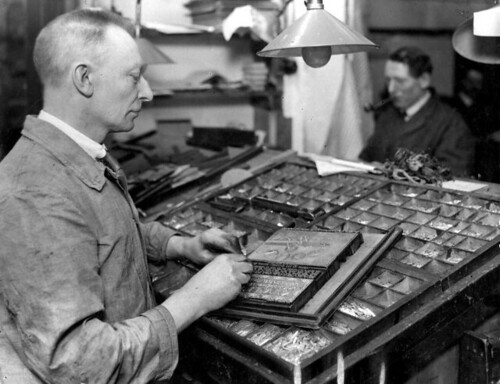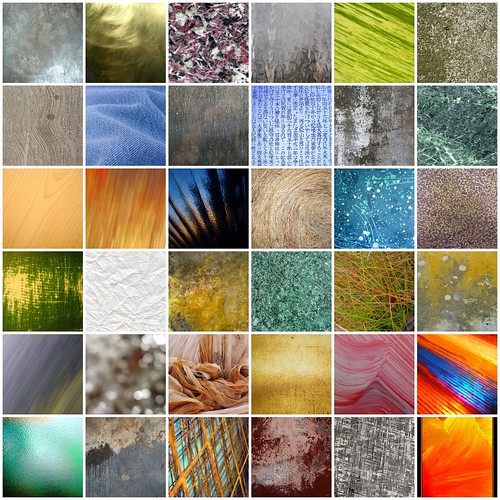Category — Introductions
When East Meets West – Technology

When East Meets West, originally uploaded by CiaoChessa.
Hello,
My name is Lindsey Martin and I chose this photo because I believe it demonstrates the idea that new technologies change communities and cultures. The course thus far has indicated that some cultures use new technologies while others choose not to. I find this photo to be indicating the balance of power that some of the readings have shown. New technologies create a shift in the balance of power and I believe the image, in an almost ironic sense, shows this. The two men, who are clearly traditional in their culture, using cameras could indicate that new technologies will have an effect on how we live and changes how we see our world and community.
I am a secondary school teacher in Surrey, BC and have been teaching for five years. I primarily teach social studies and history. My interest in this course initially was the idea of looking at technology and writing in a new way. I have always looked at technology and writing in a very broad sense and I am now excited to look at it from all different vantage points. I am also excited to use all this “new technology” in my teaching practice and hope that I can become a better educator through this course and the MET program. This is my first course in the MET program and so far it has been intellectually stimulating! I look forward to working and getting to know all of you!
September 9, 2009 1 Comment
Common Textures
Reference Mosaic: Creative Commons Textures, originally uploaded by Jasen Robillard.
Hi, I’m Maureen Coyne.
I chose this photo because it reminded me of what I had just learned in the introductory module about the fact that the word text shares the same prefix as texture and textile. I had never made those connections before. This photo displays many different textures, which reminds me of the word text, which is a group of words that are woven together.
I work as a learning consultant with the Canadian federal government in Ottawa, Canada. I’ve been working as a public service employee for the past three years. My principle work duties involve designing and developing e-learning courses and programs for public service employees and project managing these projects. I’ve also been involved in editing course content, creating e-learning standards, and developing facilitator-led courses.
I have a Degree in Geology, a Diploma in Technical Writing and a MET Graduate Certificate in Technology-Based Distributed Learning. This is the 10th course that I’ve taken in the MET program.
I look forward to working with you!
Regards,
Maureen
September 9, 2009 No Comments
Australia Indigenous dancers

Aboriginal dancers, originally uploaded by NeilsPhotography.
Hello everyone, my name is Ashley Jones.
I picked this picture of Aboriginal dancers for a couple of reasons. I am currently residing in Australia and the beliefs and traditions of the Indigenous People facinate me. Oral communication is greatly valued within Aboriginal communities and serves as a method of passing down specific cultural practices, values, beliefs, languages, laws, histories and family connections. These can be communicated through storytelling, song, dance and art. It is believed that there were over 700 distinct language groups in Australia prior to the European Invasion.
As for myself, I completed a Biology degree and then went on to complete a year-long internship to obtain my teachers certificate. Soon after I took off to teach for a year in a small town in Costa Rica where I developed a passion for surfing and cooking with hot chilli peppers!
Upon returning to Canada, I taught at a Secondary Distributive Learning School in Victoria, BC for three years. The courses I taught and developed were all online for the students to access, while I was avaliable at the school for drop-in help, tutorials and to supervise test writing.
This year, my husband took a year-long job in Australia so I am fortunate to be able to complete my Masters while in beautiful Perth!
I look forward to getting to know you all as we go through this course!
September 8, 2009 No Comments
Typing Class, 1970s – an update is available on this classroom

Typing Class, 1970s, originally uploaded by SinclairCommunityCollege.
Update the hair and clothing by a decade, and this would look like my high school typing class. Take away the power cords and regress a few decades, and this would look like my mom’s high school typing class. Now, typing classes have been replaced with computer applications courses, which teach touch typing in two to three months (e.g., http://south.sd41.bc.ca/depts/courses/cselection.htm – from the website of my alma mater), as by the time most students enter high school, they have been using a QWERTY keyboard attached to a computer for years, many without a lesson. This allows for a greater exploration of the creative applications of the technology far beyond the endless speed drills I spent doing in Typing 10. What change will the next innovation bring?
As a side note, I also considered the furniture and electrical systems that needed to change from the time when the first manual typewriter was introduced in typing classes, through electric typewriters, through a constant upgrade of computers. Education is, indeed, getting more expensive!
Hello! I am Tracy Gidinski. I will be teaching grades 6 and 7 at Taylor Park Elementary School in Burnaby, British Columbia. I have been teaching for 16 years, always focusing on grades 5 to 7 (and, for a four-year time, teaching a multiage 5/6/7 class). My preferred grade is combined 6/7. For the past few years, I have had my students create personal blogs and cooperative wikis, and am interested in further extending my students’ abilities to use technology to improve their literacy and thinking skills, which leads me to this course. This is my second MET course – I took ETEC 512 last year, and am hoping that the steep learning curve of taking a course online will be less steep this semester!
September 8, 2009 1 Comment
the power of a simple word

YES, originally uploaded by jeremyhead.
It is said that when John Lennon visited Yoko Ono’s art exhibit, he climbed a ladder to see a single word on a paper attached to the ceiling. That word was…Yes. He was so impressed with an artist who would have such positive thoughts that he decided to meet Yoko, and then, well the rest is history. All words have magical powers. The power to inspire, the power to intimidate, the power to woo or soothe…And words take on different powers depending on how they are spoken or how they appear in print. And most importantly, it is the knowledge of words that gives us such power over circumstances and surroundings. Empower yourself! Learn a new word today!
I am a Business/Computer teacher in Ontario. Literacy is of interest to me in that it is a necessary component of student success. Equally important is that my own son was touched by the power and magic of learning to read. It opened the door to a whole world that would have remained silent to him and allowed him to share his sometimes chaotic, sometimes frightening thoughts.
Catherine Gagnon – Orleans, ON
September 8, 2009 2 Comments
My Mashup of Mike’s Mashup of My Mashup
Hi all, this is Brian, one of the putative instructors…
I like this image for a lot of reasons. The multi-dimensional tensions it illustrates between digital and analog, read-only and read-write formats. The clever, low-tech mixture of media… paper, photography, Second Life. The way it playfully explores an ongoing controversy concerning alternative copyright approaches. The slightly mischievous insertion of Stephen Downes (the first ed tech blogger, so far as I know) makes me smile.
I came across this image while preparing a presentation on mashups. I didn’t end up using the image, but it was too cool to pass up. So I did what I often do when I encounter something I don’t know what to do with — I blogged it. And was delighted the following morning to see that Beth Kanter, a very interesting and accomplished educator and the creator of the image, had commented on my post. She shared some resources having to do with how social media can be employed by people in the non-profit sector, which I have subsequently shared with others.
I’ve since come to think of Beth as part of my personal learning network. And this image and the stories behind it illustrate to me how content, and the reuse of others’ materials, has moved beyond simply managing inert resources. Increasingly, the work we do online becomes the framework for rich and ongoing social learning relationships.
September 8, 2009 No Comments
Typesetting the old fashion way!

Typesetting the old fashion way!, originally uploaded by etec540’s photos.
This is a blog posting from Jeff, one of your instructors. You’ve likely read some bio information about me in the course introduction already. I wanted to also post a blog entry here to get us all started with our class introductions.
This early 19th century photograph of typesetters nicely depicts the close relationship between literacy and technology. The two men sitting before rows of dirty lead type, have their hands covered in the industrial processes by which books or newspapers of the time were published. I now have in my kitchen a similar wood tray that was once used by typesetters such as these. It is an antique, an artifact from a different time when type had to be set by hand. It holds old corks and knick-knacks (and a lot of dust) and is a nice reminder of how dramatically can change the means by which we produce, reproduce and consume texts.
An historical perspective is essential in fast changing times such as these, particularly when we are perpetually told that all of our media are new, that books are going the way of the dodo, and that all of children are now digital natives of a country that we can only hope to visit with a visa and an accent. This course will challenge us to think about historical periods in which different technologies have impacted the ways by which people communicated with one another through different media. Hopefully some of the artifacts we encounter, as well as the social and cultural responses to these media, will help us to better analyze the changes currently underway in a world swept with digital media, convergence technologies and networked communications.
I look forward to exploring these issues with all of you in the course!
Jeff
September 7, 2009 No Comments



